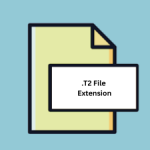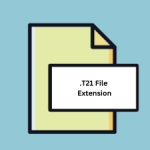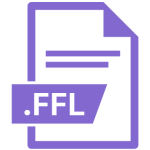.FETCHSHORTCUTS File Extension

Fetch Shortcut List FIle
| Developer | Fetch Softworks |
| Popularity | |
| Category | Data Files |
| Format | .FETCHSHORTCUTS |
| Cross Platform | Update Soon |
What is an FETCHSHORTCUTS file?
.FETCHSHORTCUTS files are small-sized files that contain a list of shortcuts used by specific applications or programs.
These shortcuts typically consist of keyboard combinations, menu items, or other quick access methods that users employ to execute specific functions within the software efficiently.
More Information.
The history of .FETCHSHORTCUTS files is intertwined with the evolution of software usability and user experience. Initially, software applications provided limited customization options for shortcuts.
As user demands increased, developers began integrating features to allow users to define their own shortcuts.
.FETCHSHORTCUTS files were introduced to facilitate the storage and retrieval of these customized shortcut configurations.
They provided users with a standardized format to save and share their shortcut preferences across different installations or with other users.
Origin Of This File.
The origin of .FETCHSHORTCUTS files can be traced back to the need for users to customize their workflow within software applications.
As software became more complex and feature-rich, users sought ways to expedite tasks by utilizing keyboard shortcuts and other quick access methods. .FETCHSHORTCUTS files emerged as a means to store and manage these shortcuts conveniently.
File Structure Technical Specification.
.FETCHSHORTCUTS files typically follow a structured format to store shortcut data efficiently. While specific implementations may vary depending on the software application, a typical .FETCHSHORTCUTS file may include the following components:
- Header Information: Contains metadata about the file, such as the application name, version, and author.
- Shortcut Entries: Each entry includes details about a specific shortcut, such as the action it performs and the associated key combination or command.
- Comments: Optional annotations or descriptions provided by the user for reference.
How to Convert the File?
Converting .FETCHSHORTCUTS files may not be a straightforward process as they are typically used for storing shortcut configurations rather than containing data that needs conversion.
Depending on the specific requirements, users may want to convert .FETCHSHORTCUTS files into other formats or import them into different applications. Here are some potential approaches to achieve this:
- Export/Import Functionality: Many software applications that utilize .FETCHSHORTCUTS files may provide built-in functionality to export or import shortcut configurations. Users can explore the options within the software to export the shortcut list to a more accessible format or import shortcut configurations from another source, which may include .FETCHSHORTCUTS files.
- Manual Conversion: If the software does not offer direct export/import functionality, users can manually recreate the shortcut configurations in another application. This process involves noting down the existing shortcuts listed in the .FETCHSHORTCUTS file and inputting them manually into the target application’s settings.
- Scripting or Automation: For advanced users familiar with scripting or automation tools, it may be possible to automate the conversion process. This could involve writing scripts to parse the .FETCHSHORTCUTS file and generate output in a compatible format for the target application.
- Third-Party Conversion Tools: While specialized tools for directly converting .FETCHSHORTCUTS files may not be common, users can explore third-party software that offers general file conversion capabilities. These tools may support converting between various file formats and could potentially handle .FETCHSHORTCUTS files as well.
- Custom Development: In scenarios where specific requirements demand conversion capabilities not readily available through existing solutions, users or developers may opt to develop custom tools or scripts tailored to their needs. This approach allows for precise control over the conversion process but may require a significant investment of time and resources.
Advantages And Disadvantages.
Advantage:
- Customization: .FETCHSHORTCUTS files allow users to customize shortcut configurations according to their preferences, enhancing productivity and workflow efficiency.
- Portability: Users can easily share .FETCHSHORTCUTS files with others or transfer them between installations, ensuring consistency across different environments.
- Backup and Restore: .FETCHSHORTCUTS files serve as a convenient means to backup and restore shortcut configurations, safeguarding against data loss or system changes.
Disadvantage:
- Compatibility Issues: .FETCHSHORTCUTS files may not be compatible with all software versions or applications, leading to potential issues when transferring or sharing shortcuts.
- Limited Standardization: While .FETCHSHORTCUTS files provide a standardized format for storing shortcuts, variations in implementation across different applications can complicate interoperability.
- Risk of Data Loss: If .FETCHSHORTCUTS files are corrupted or misplaced, users may lose their customized shortcut configurations, requiring manual reconfiguration.
How to Open FETCHSHORTCUTS?
Open In Windows
- Associated Software: If you have the software application associated with .FETCHSHORTCUTS files installed on your Windows system, simply double-clicking the file should open it within the respective application.
- Text Editors: Alternatively, you can open .FETCHSHORTCUTS files using text editors such as Notepad, Notepad++, or Visual Studio Code. While this won’t display the shortcuts in a user-friendly manner, it allows you to view the contents and make manual edits if necessary.
Open In Linux
- Command Line: Linux users can use command-line text editors like Vim or Nano to open and view .FETCHSHORTCUTS files directly within the terminal.
- GUI Text Editors: Graphical text editors like Gedit or Kate can also be used to open .FETCHSHORTCUTS files in a more user-friendly interface.
Open In MAC
- Associated Software: Similar to Windows, if you have the relevant software installed on your Mac, double-clicking the .FETCHSHORTCUTS file should open it within the application.
- Text Editors: macOS users can use built-in text editors like TextEdit or third-party ones like Sublime Text to open and view .FETCHSHORTCUTS files.
Open In Android
Opening .FETCHSHORTCUTS files on Android can be done through:
- Third-Party File Manager Apps: Utilize file manager apps from the Google Play Store, which may support .FETCHSHORTCUTS files.
- Text Editing Apps: Transfer the file to your device and open it with text editing apps like Google Docs or code editors for manual viewing.
Open In IOS
Opening .FETCHSHORTCUTS files on iOS devices can be approached in two ways:
- Third-Party File Management Apps: iOS users can use third-party file management apps from the App Store that support a wide range of file types, including .FETCHSHORTCUTS files. These apps often provide features for viewing and managing various file formats.
- Transfer and View: Transfer the .FETCHSHORTCUTS file to an iOS device using cloud storage services, email, or file transfer apps. Once transferred, users can attempt to open the file with compatible apps such as text editors or productivity apps that support viewing text-based files.
Open in Others
For other operating systems or specialized environments, the ability to open .FETCHSHORTCUTS files may depend on the availability of compatible software or tools.
Users can explore third-party applications or utilities designed for managing shortcut configurations that may offer support for .FETCHSHORTCUTS files or provide conversion options to a more accessible format.













